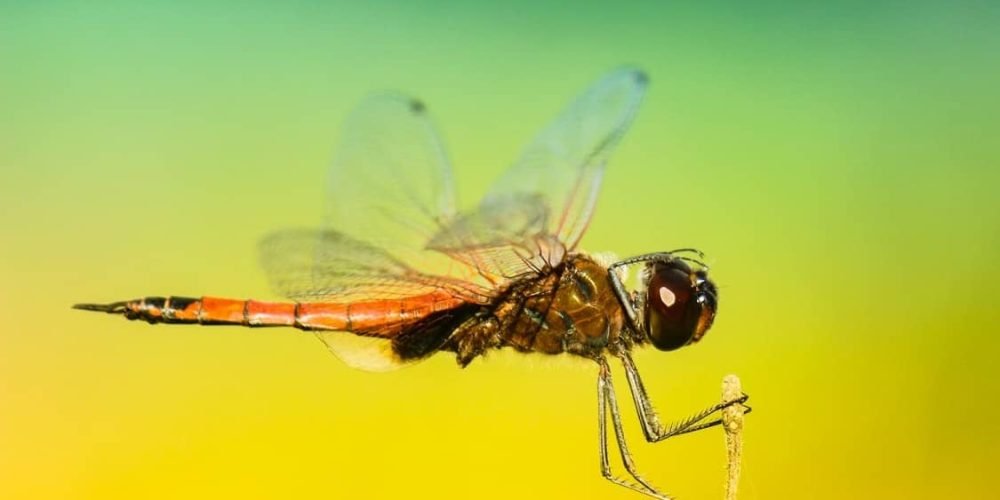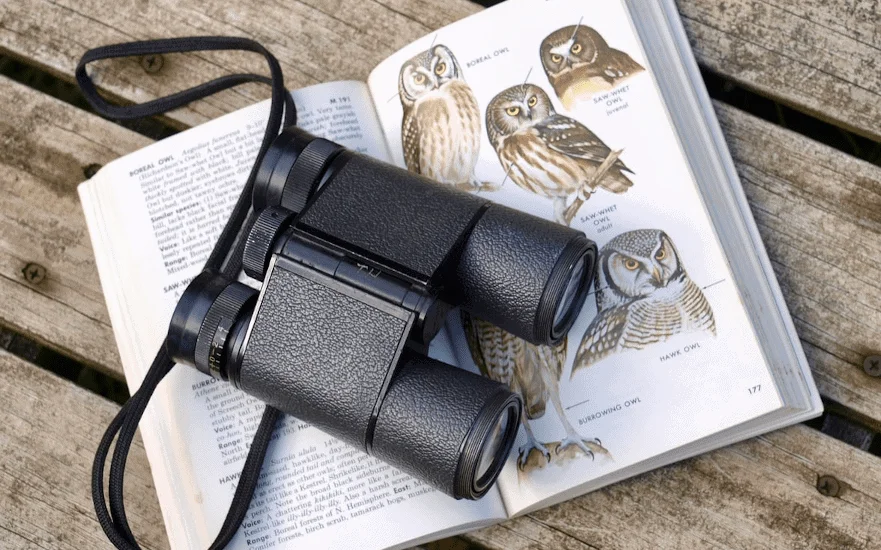
Dragonflies are somewhat startling in appearance with their long bodies, wide wings, and rather large head with bulging eyes. This is because dragonflies are one of the oldest insects on Earth, dating back around 325 million years. This means that they come from an era older than dinosaurs and apart from becoming somewhat smaller they have changed relatively little over that time.
The reason why dragonflies have survived for so long is that they are predators who are built to spot prey and fly faster to catch their next meal. Flying at speeds of nearly 30 mph, they are also fast enough to avoid birds and other predators that seek out dragonflies as their meal of the day.
While dragonflies are fascinating insects that everyone would like to have around, there is a practical reason why dragonflies should be a part of your yard or garden. Dragonflies feast in mosquitoes and other insects that feed on plants. Plus, with mosquitoes presenting a danger to humans, dragonflies keep their population in check by hunting them down.
While dragonflies are quite common, they are not present everywhere. Attracting them to your yard, especially when you have a garden that is vulnerable to insects should be a top priority. What follows are five tips to help you attract dragonflies to your yard.
How to attract Dragonflies to your yard?
Before starting with the tips on attracting dragonflies, you will need to do a quick check of your property to best understand what works for you. Dragonflies require a considerable amount of space dedicated to having them become a part of your property. So be aware of what you have before making any improvements to your yards.
1. Water
The availability of water is most important if you want to attract dragonflies to your yard. The presence of water not only provides shelter for the dragonfly larva as they develop, but also a potential food source if mosquitoes decide to use it as a place for breeding.
Ideally, you should have a shallow pond about 20 feet in diameter. The pond should be no more that 2 feet in depth. Plus, it needs sloping sides that gradually rise to the surface on the edges. This type of pond will allow for the full development of dragonflies as they leave the larval stage. Be sure that you do not stock fish in the pond. Otherwise they will eat the larva.
If you do not have that type of space, then try adding a rain garden or small bog to your property. This should be a place where the water will stand for long periods. The larger the area of water, the more likely you will attract dragonflies.
If you’re looking to attract dragonflies as well as birds and other animals then a low elevation bird baths may be effective for you. With the addition of a solar powered fountain pump, water will be constantly flowing in your water bath which will attract all kind of animals.
2. Plants
Now that you have the water available, you’ll need the right plants to make it work. This means you will need both submerged and surface plants for the pond or bog of water. The dwarf sagittaria may be the perfect submerged plant as it provides dragonflies in the larva and nymph stage to find food and shelter.
On the surface, water lilies are the perfect addition as they require little maintenance and provide additional shelter for the dragonflies. Add some water horsetails near the edges which will add even more shelter and a place to land for adult dragonflies.
In addition, you’ll want to plant some black-eyed Susan or some Rudbeckia hirta around the pond, perhaps some swamp milkweed as well. While the plants themselves are of little interest to the dragonfly, they attract the type of pollinators that dragonflies love to eat.
3. Open Area
The area around your pond should have only a few tall trees or places that block the vision of the dragonfly. For the most part, you’ll want to stock plants around the pond and have plenty of open space which serves to attract dragonflies. Plus, the open area allows for more sunlight which is helpful to dragonflies as it keeps them warm and active.
4. Flat Rocks
This one is a free tip if you can collect some flat rocks of moderate size to place around your pond or body of water. During the spring, summer, and early fall, the flat rocks will gather heat from the sun which attracts the dragonflies. They use the rocks to help warm up over the course of the day. This means that adding flat rocks to the edges of the pond and nearby areas will definitely help.
You might be tempted to place the flat rocks in the pond itself. Keep in mind that the lower water temperature may reduce the heat gathered from the sun. You should also experiment with different colors of rocks to see which ones work best. The darker the rock material, the more the heat will build during the day.
5.Perches
As hunters, dragonflies like to scan the area around them to both search for prey and predators. One simple way to create perches is to plant sticks about six feet apart in your garden. The sticks should be a couple of feet tall and secure enough, so they are a solid perch for the dragonfly. This allows the dragonfly to land, rest, and be on the lookout for mosquitoes as well as potential predators such as birds.
The large eyes of the dragonfly are quite helpful in spotting both, which means having a good perch will let them see without always flying around. By placing them about six feet apart, that provides the dragonflies with enough resting places to cover your garden.
The combination of all five tips makes for the perfect setting to allow dragonflies to live and breed. Of course, once you have put all this into place, the dragonflies can basically take care of themselves. Despite long periods in the larval and nymph stages, dragonflies tend to breed quickly to make up in numbers lost to predators. What you want to check on from time to time are the following;
- Fish in the pond
- Health of the plants
- Additional birds in the area
The more predators present, the fewer dragonflies you will have. There is probably not much you can do about the bird population. But if you keep the area open the dragonflies will have a good chance of surviving. However, you can remove whatever fish may appear in the pond through the use of nets and the like.
Why do Dragonflies Live Near the Water?
You’ll often seen dragonflies around water from ponds to streams and smaller bodies such as birdbaths and even puddles. There is a good reason why dragonflies choose these areas on their daily quest for food as that is where most of their prey live. Mosquitoes use the water for breeding, so dragonflies hang around these areas in hopes of catching them.
The same is true for flies as they are often found near bodies of water, too. With many plants growing near ponds, streams, and even puddles, they become the perfect hunting ground for dragonflies. However, dragonflies also breed and use the water to protect their larva. When in the larva and nymph stages, dragonflies are either under or on the surface of the water.
Can Dragonflies Bite?
While it is true that dragonflies are carnivorous, eating flies and mosquitoes as their primary diet, they have no interest in biting humans. In fact, dragonflies have no stingers which means that they are harmless even when buzzing around you looking for food.
So, while dragonflies are larger than bees and make a noticeable sound when they flutter past, they are perfectly harmless to you. While it may take a little time in getting used to having them around, you’ll need to remember that it’s not your skin they are interested in. It is the insects that are affecting your garden in which they are focused.
How Long do Dragonflies Live?
How long they live is an interesting question since in the adult stage dragonflies do not live very long. However, the larval stage of the dragonfly can last up to five years depending on the species. However, some are only in this state for two months. When in the larval stage, the dragonflies live below the surface of the water. This is another reason why dragonflies are often found around the water.
From the larval stage comes a transition to adulthood which requires the larva to ascend to the surface and attach themselves to nearby grass and plants. After a time, they leave their skin and start taking on the appearance of adult dragonflies. The transition period usually happens in the early spring for some dragonflies, then in mid-summer for others. In both cases, the adult dragonflies usually live about seven months on average.
Dragonflies are a fascinating species that offers great benefits to humans. Because they feast on the very insects that damage plants, dragonflies are the perfect addition to your garden. Knowing how to attract them means having dragonflies protecting your plants during the spring and summer months.
Dragonfly Fun Facts!

More Articles.

Best Camera For Bird Watching 2020
Article Summary: Best Budget Camera: Nikon D500 DX-Format Digital SLR Best Mid-tier Camera: Canon EOS

Best Binoculars for Bird Watching 2020
Article Summary: Best Budget Binoculars: Nikon 8250 Aculon 16×50 Best Mid-tier Binoculars: Nikon Monarch 5

Best Bird Watching Locations in the United Arab Emirates 2020
The United Arab Emirates is a country situated in the Middles East and experiences hot,

About Us
We are avid bird-watchers who recently retired, allowing us more time to travel the world. Fortunately, we have managed to visit numerous countries around Europe, Asia, and America. Watching and photographing birds has been a passion for many years and we are making the most of the extra time on our hands!


